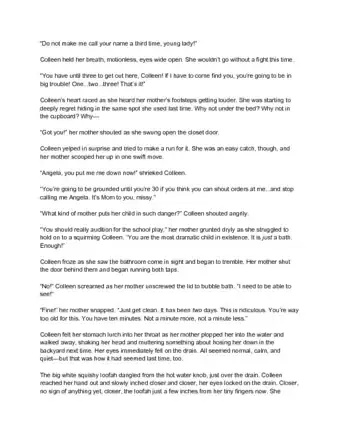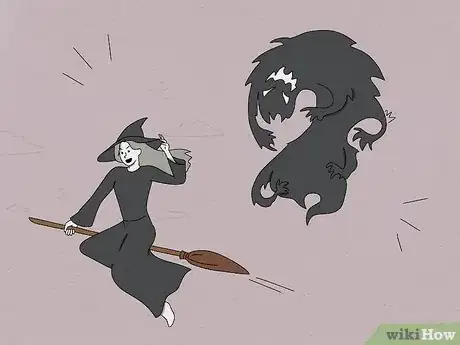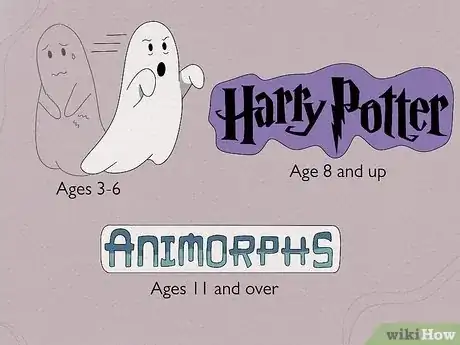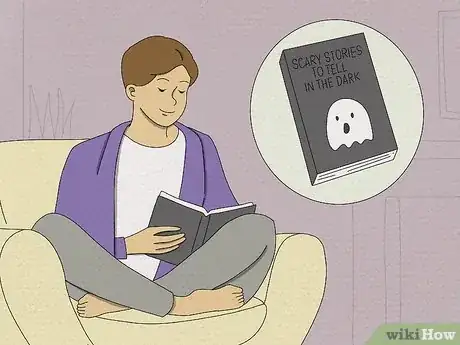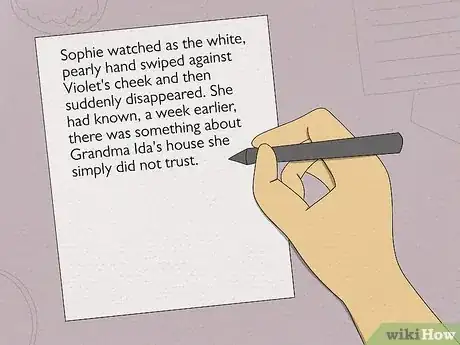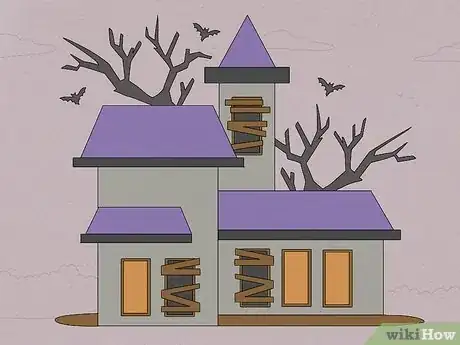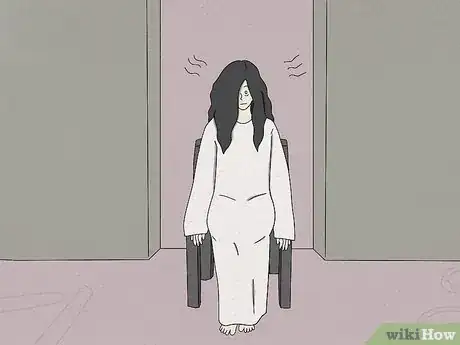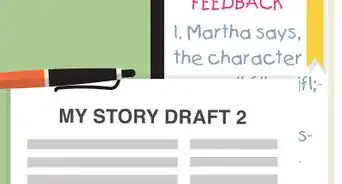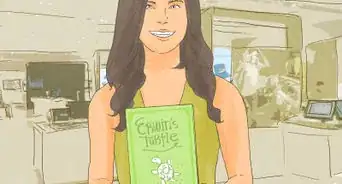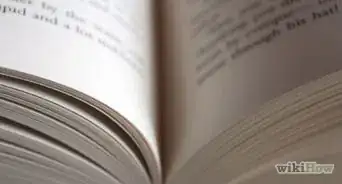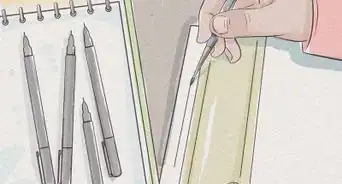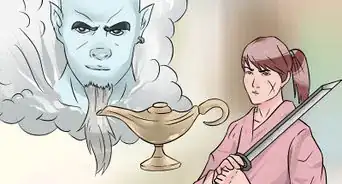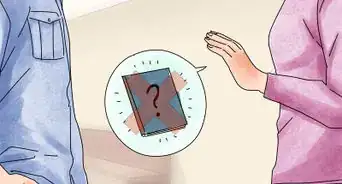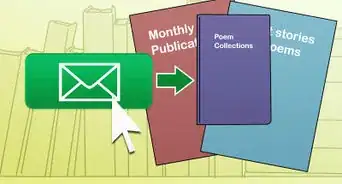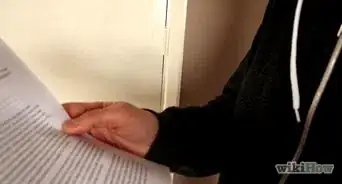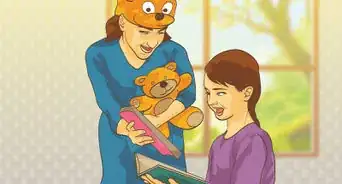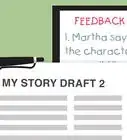This article was co-authored by Grant Faulkner, MA. Grant Faulkner is the Executive Director of National Novel Writing Month (NaNoWriMo) and the co-founder of 100 Word Story, a literary magazine. Grant has published two books on writing and has been published in The New York Times and Writer’s Digest. He co-hosts Write-minded, a weekly podcast on writing and publishing, and has a M.A. in Creative Writing from San Francisco State University.
There are 9 references cited in this article, which can be found at the bottom of the page.
This article has been viewed 75,102 times.
Children stories have always contained certain aspects of horror. Many old fairy tales, for example, contain supernatural elements. Children tend to respond well to scary stories, learning moral lessons through metaphors involving ghosts and monsters. If you want to write scary stories for kids, learn as much as you can about the genre and craft a thoughtful story with a clear beginning, middle, and end.
Steps
Sample Scary Story
Prewriting
-
1Explore fear. Scary stores are meant to provoke feelings of fear. In order to successfully craft a scary story for a young child, you need to learn about the kinds of topics that tend to provoke fear.
- The unknown is perhaps the scariest topic of all. People do not know what comes after death, and so death is frightening. If the source of a noise cannot be identified, that noise can provoke fear. Playing with people's fear of the unknown and the unknowable can be an effective means to tell a horror story.[1]
- Withholding information can be an effective means to write a horror story. Sometimes, leaving out precise explanations for certain mysteries can be more satisfying than a fully explained ending. Try to leave something to the imagination when crafting your scary story.[2]
-
2Think of a topic. Scary stories tackle a variety of topics and ideas. Choose a topic for your story that you feel is appropriate for the given age group.
- Stories about paranormal activity are popular for children's scary stories. Such tails usually involve stories of ghosts, demons, and other otherworldly specters. Such stories are often told around the campfire. An example would be the legend of Bloody Mary, a story in which you can summon the spirit of an angry ghost by saying "Bloody Mary" three times while looking into the mirror.
- Stories about monsters are also popular among children. Monsters from folklore, like witches and ogres, are often portrayed as posing some threat to a person or community and requiring defeat. The legend of Tailypo would be an example. The story is about a hunter who somehow cuts off the tail of a mysterious creature in the woods, only to be stalked by the creature each night with demands the tail be returned.[3]
- Stories about murder and gore are also sometimes popular. An example would be the infamous campfire legend "The Hook" in which sightings of a serial murderer who kills victims with his hooked hand are reported in a given area. A couple or a group of friends are sitting alone in a car and one of the gang says they hear something, prompting them to drive away. Later, a hook is found hanging off the car's bumper. Such subjects can be very frightening and might be more appropriate for older children.
Advertisement -
3Learn about different age groups. Different topics might be more appropriate for different age groups. While it can be fun for children to occasionally feel frightened, you do not want to cause nightmares or intense distress.
- For very young children, from ages 3 to 6, you might want to keep stories somewhat lighthearted and offer a happy resolution. Children in this age group may be more susceptible to fear than other ages. You should present a scary scenario, but find a way to leave off on a comforting note. The ghost that haunts the mansion turns out to be friendly. The monster in the dark woods is only roaring and chasing children because (s)he has a stomach ache.[4]
- For older children, there may actually be benefits to reading scary stories. Many fears, like loss of family and abandonment, can be healthily addressed in scary stories. However, it's important that some kind of lesson or positive outcome results from a scary story. The Harry Potter series, for example, is considered age appropriate reading for children 8 and up because it takes place in a moral universe where evil is punished and fought against. As long as your scary stories end in some kind of victory, even if there is sadness along the way, it is probably appropriate for children between ages 6 and 10.[5]
- As children get into the young adult phase, ages 11 and over, they begin to question overly optimistic resolutions. It's okay, if you're writing for this age group, to leave certain aspects of a story open ended. Look at the Animorphs series, for example, very popular with a young adult audience. While the series ends with the heroes continuing to fight, the exact outcome of the final battle remains a mystery.[6]
-
4Read a variety of scary stories. The best way to brainstorm ideas for your own story is to read many examples. Browse through scary stories written for a younger audience to give you a sense of language, content, and length.
- The Scary Stories to Tell in the Dark is a series of three books written for children ages 10 to 14. These stories adapt folklore and legends for preteen audiences and would be good reading material if you're looking to write scary stories for kids.[7]
- Many fairy tales contain very scary aspects. In "Hansel and Gretel", for example, the witch nearly cooks and eats the protagonists. Reading a volume of fairy tales aimed at a young audience can give you a sense of how to balance horror with age appropriate content.[8]
- Ask librarians and book store workers for recommendations on scary stories for children. They will have a good sense of what the bestselling horror authors for young children are in the current market.
- You can also turn to television for examples. The 90s Nickelodeon show Are You Afraid of the Dark? was frequently praised by television critics for providing genuinely scary stories that remained age appropriate for a younger audience. While the series is off the air, you can watch episodes through many online outlets like Amazon instant video and also purchase DVDs.
Writing the Story
-
1Write a strong beginning. The key to a good horror story is a strong beginning. Your beginning should hint at the story's central problem and introduce one or two characters that will deal with that problem.[9]
- There are many ways to start a scary story. Some writers might start in the middle of the story and move back, opening with a scene involving the scary element. Others might start off using descriptive language
- For example, say you're writing a story about two young girls navigating a haunted house. You could begin with a scene with the girls in the thick of their troubles, something like "Sophie watched as the white, pearly hand swiped against Violet's cheek and then suddenly disappeared. She had known, a week earlier, there was something about Grandma Ida's house she simply did not trust." You could also write using language and dialogue that foreshadows the house is haunted. For example, "As the car pulled into their grandmother's mansion, the yard surrounded by black, lacy fencing, Sophie turned to Violet and said, 'Is it just me, or is there something about this place that just doesn't feel right?'"[10]
- There are, of course, many ways to begin a story, but you should always aim to get the reader's attention. This is especially true if you're writing horror stories for young children, as they will likely be shorter and you have limited space to work with.
-
2Focus on building suspense in the middle. As the story progresses, suspense and action should gradually build. Characters should be introduced and the central mystery or scary aspect should be brought out scene by scene.
- When it comes to writing, "Show don't tell" is a good adage. Introduce the characters through dialogue and action. Let's return, for a moment, to the above example. Say Sophie tends to be more cautious while Violet is the more adventurous of the pair. You could illustrate this through a scene where the girls argue over whether or not to explore a mysterious moaning coming from the basement. Violet is eager to check it out, while Sophie would rather stay upstairs where it's safe.[11]
- Gradually introduce mystery and suspense. If you're writing a story about a monster, build the monster scene by scene, allowing small glimpses into its powers and appearance with time. If you're writing about a haunted house, slowly introduce supernatural elements and exposition on why the house might be haunted.
-
3Pick a climatic moment. A story's climax is the height of suspense in that given story. This is the moment where the monster is fully revealed, the ghosts makes its presence known, or the murderer attacks. Choose a good climax that will scare and entice your audience.
- There are no hard and fast rules for what makes a good climax, but make sure the path you choose is organic to the story. If you've spent the entire plot hinting that a ghost is in the attic, for example, don't have the big reveal involve a vampire hiding out upstairs. Readers will feel like their investment in the story has not paid off if elements change suddenly.[12]
- The climax should ideally be the scariest part of the story and should fall around the middle of your narrative. Try to think of something truly horrifying. Going back to our example, a good climax would be Violet and Sophie finally seeing the ghost in its full bodied form after having only seen hints of the ghosts previously.[13]
-
4Have some kind of resolution. A good horror story should have some kind of resolution. If you're writing for older children, it's okay to leave parts of the story open ended but make sure you do not leave readers hanging.[14]
- A resolution should involve some falling action in which loose ends are tied up and mysteries are revealed. Why is the monster running amuck in the nearby woods? What does the witch want from the townspeople? Why is the castle haunted? Questions like should be addressed shortly before the resolution.
- Remember, children's stories should take place in a moral universe. Make sure there is some lesson to be learned through the story's resolution. Take our example. Sophie and Violet could learn the ghost remains in their grandmother's home because the house was built over a cemetery from the American Revolution. This teaches children it's important to be knowledgeable and respectful of history. A resolution that offers a positive solution could be the girls having the house turned into a museum honoring the dead.[15]
Community Q&A
-
QuestionWhat if people don't think my story is scary?
 Community AnswerAsk them for suggestions about what they think would help to make it scary, then return and improve the story. Don't expect to write it once and that's that -- writing, like anything else in life, takes time to perfect and get right. Use the feedback from others to improve your writing and to give the readers what they're truly after.
Community AnswerAsk them for suggestions about what they think would help to make it scary, then return and improve the story. Don't expect to write it once and that's that -- writing, like anything else in life, takes time to perfect and get right. Use the feedback from others to improve your writing and to give the readers what they're truly after. -
QuestionWhat is a way to not end the story on a cliffhanger, but still have it be open-ended?
 Community AnswerMaybe the characters could resolve the main problem, but then get separated for some reason?
Community AnswerMaybe the characters could resolve the main problem, but then get separated for some reason? -
QuestionHow do I make a scary story for little kids that won't totally freak them out?
 Community AnswerAsk some younger kids what they find scary. Average what they find scariest, and keep your story below that point.
Community AnswerAsk some younger kids what they find scary. Average what they find scariest, and keep your story below that point.
References
- ↑ https://www.harleytherapy.co.uk/counselling/fear-of-the-unknown.htm
- ↑ https://nieman.harvard.edu/articles/deliberating-withholding-information-to-create-suspense/
- ↑ http://www.scaryforkids.com/tailypo/
- ↑ http://www.education.com/activity/article/write_a_spooky_story_fourth/
- ↑ http://www.parents.com/fun/entertainment/books/should-kids-read-scary-stories/
- ↑ http://www.parents.com/fun/entertainment/books/should-kids-read-scary-stories/
- ↑ http://www.scaryforkids.com/stories-to-tell/
- ↑ http://www.parents.com/fun/entertainment/books/should-kids-read-scary-stories/
- ↑ Grant Faulkner, MA. Professional Writer. Expert Interview. 8 January 2019.
- ↑ http://www.education.com/activity/article/write_a_spooky_story_fourth/
- ↑ http://www.education.com/activity/article/write_a_spooky_story_fourth/
- ↑ http://www.education.com/activity/article/write_a_spooky_story_fourth/
- ↑ https://www.youtube.com/watch?v=3Rq8f63hVys
- ↑ Grant Faulkner, MA. Professional Writer. Expert Interview. 8 January 2019.
- ↑ https://park.academies.aspirationsacademies.org/wp-content/uploads/sites/12/2020/06/Year-7-English-Spooky-Stories-Workpack-3.pdf
